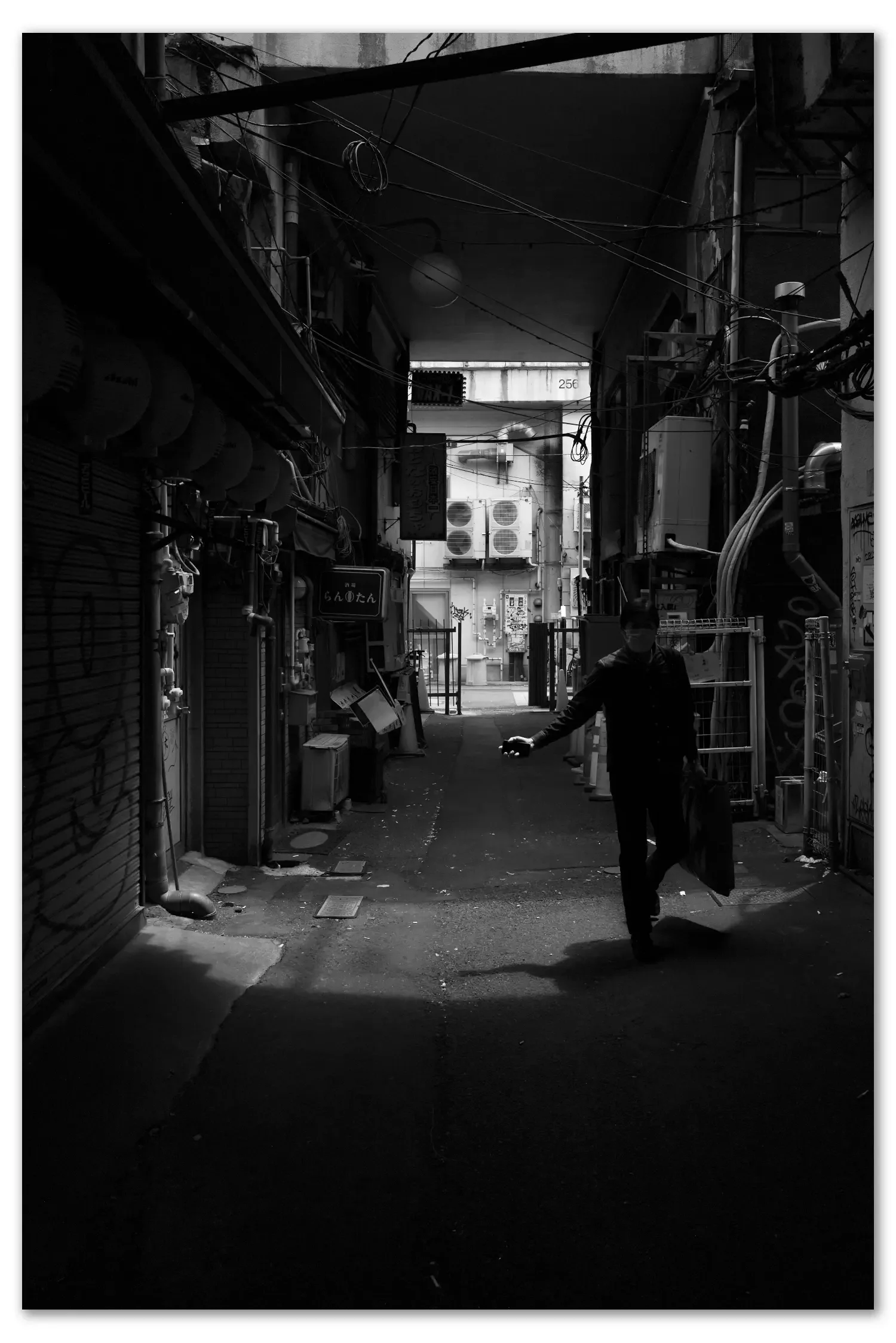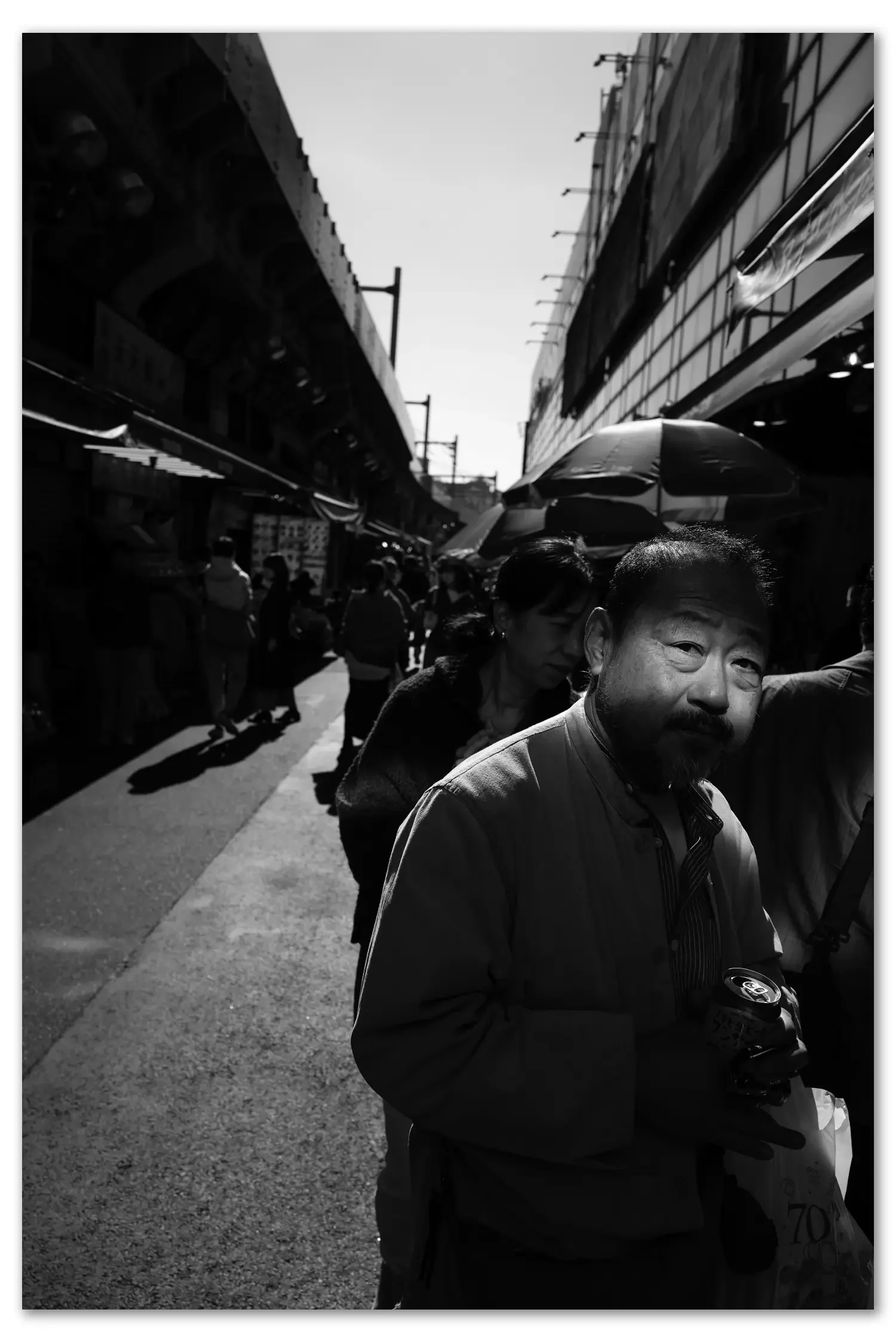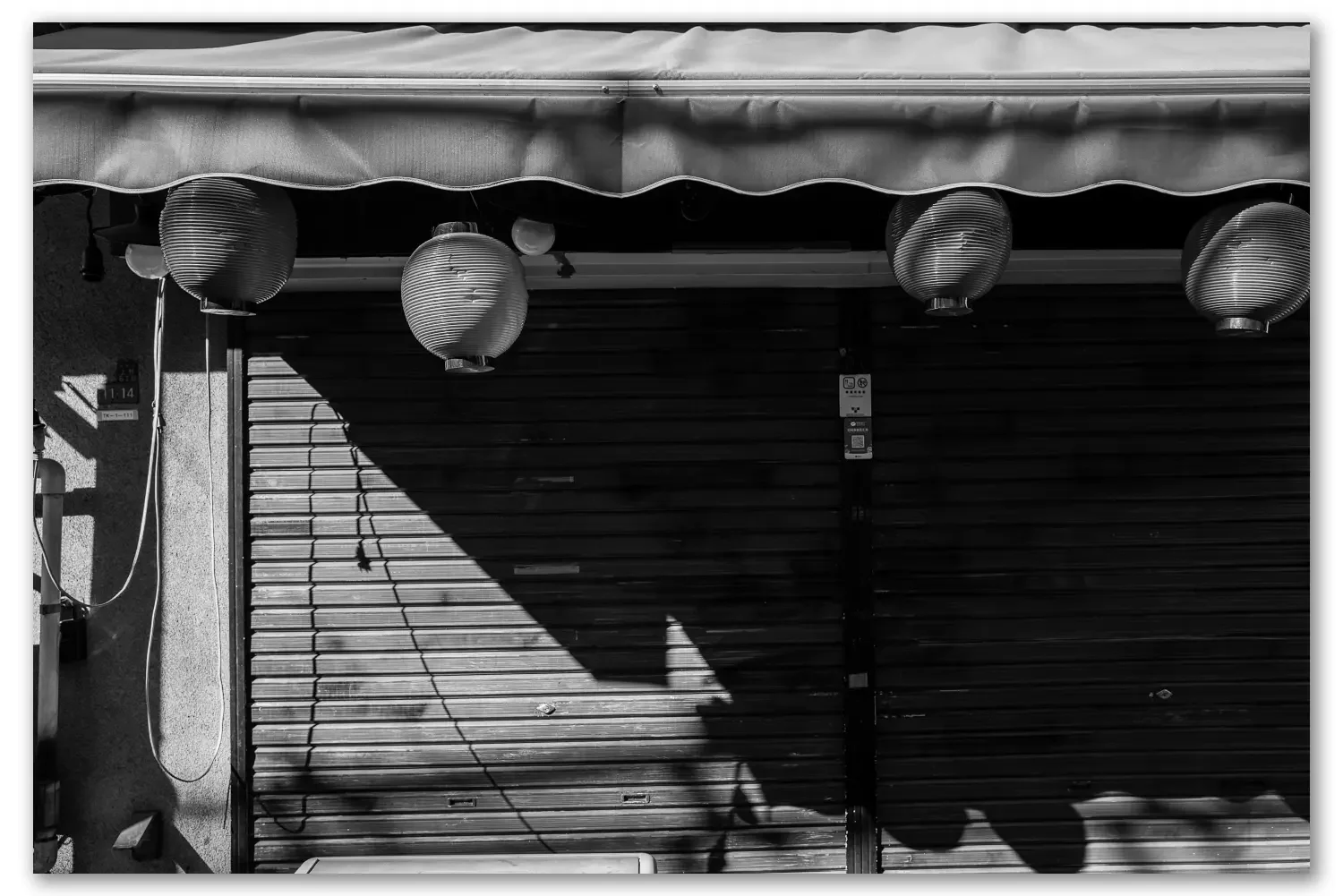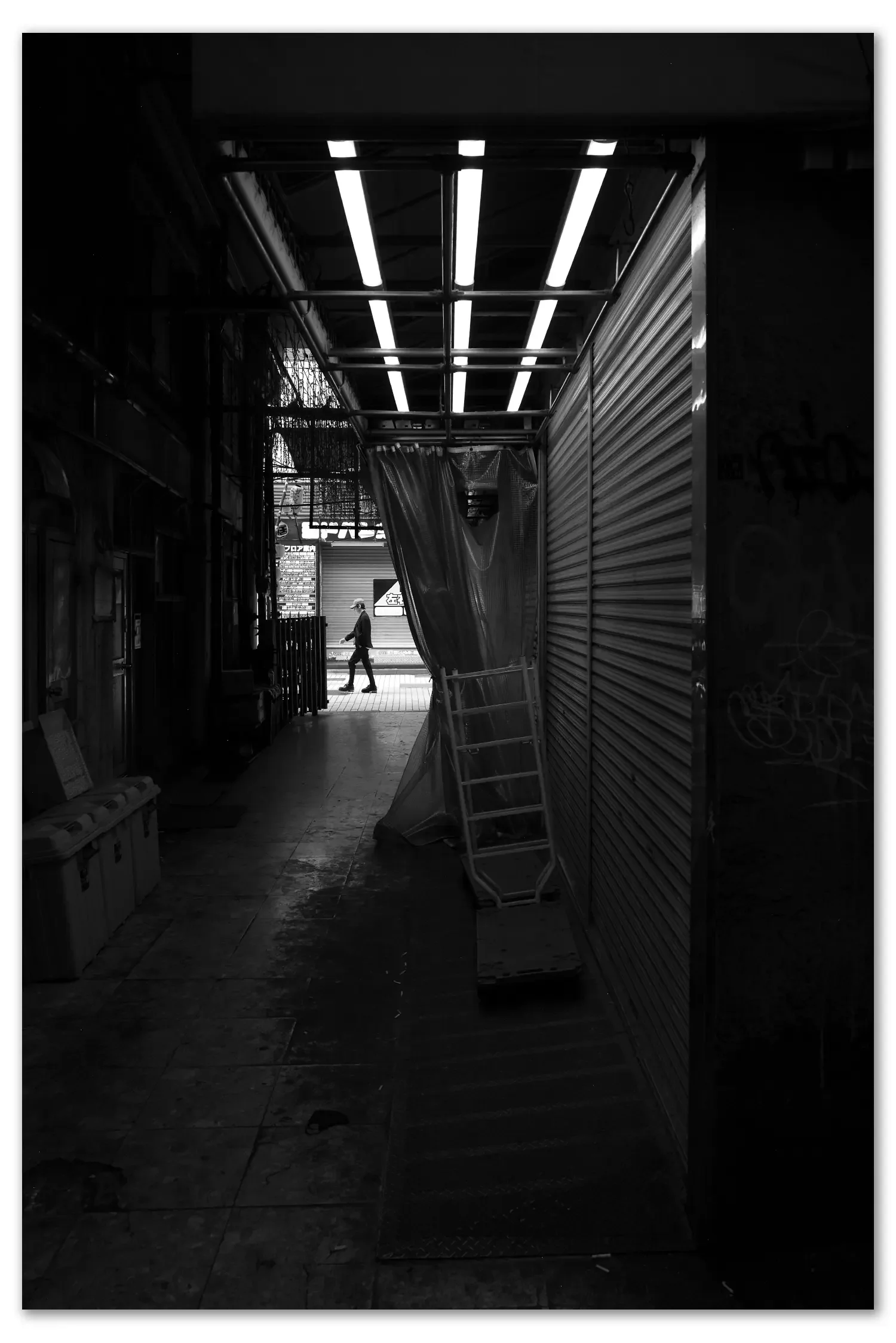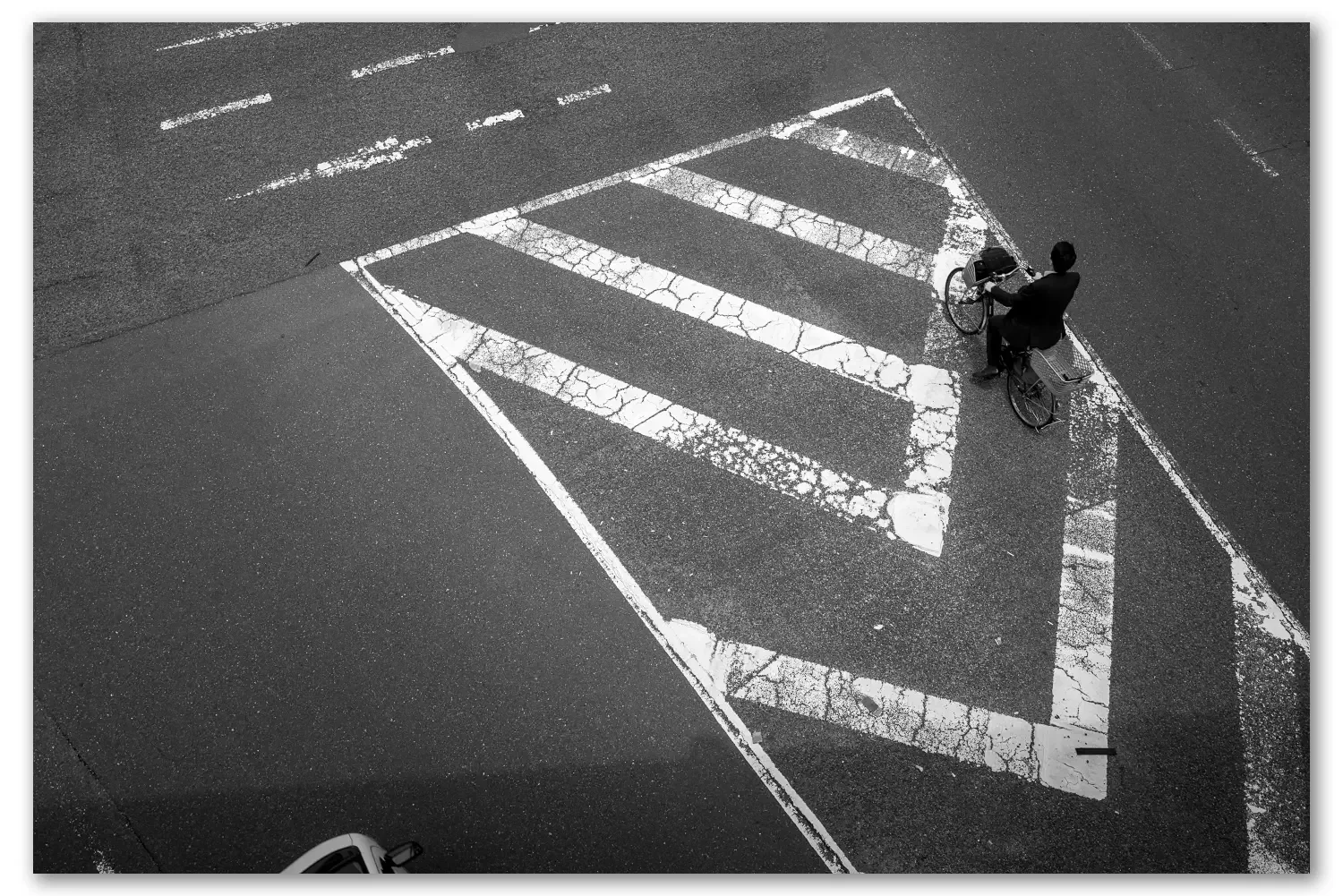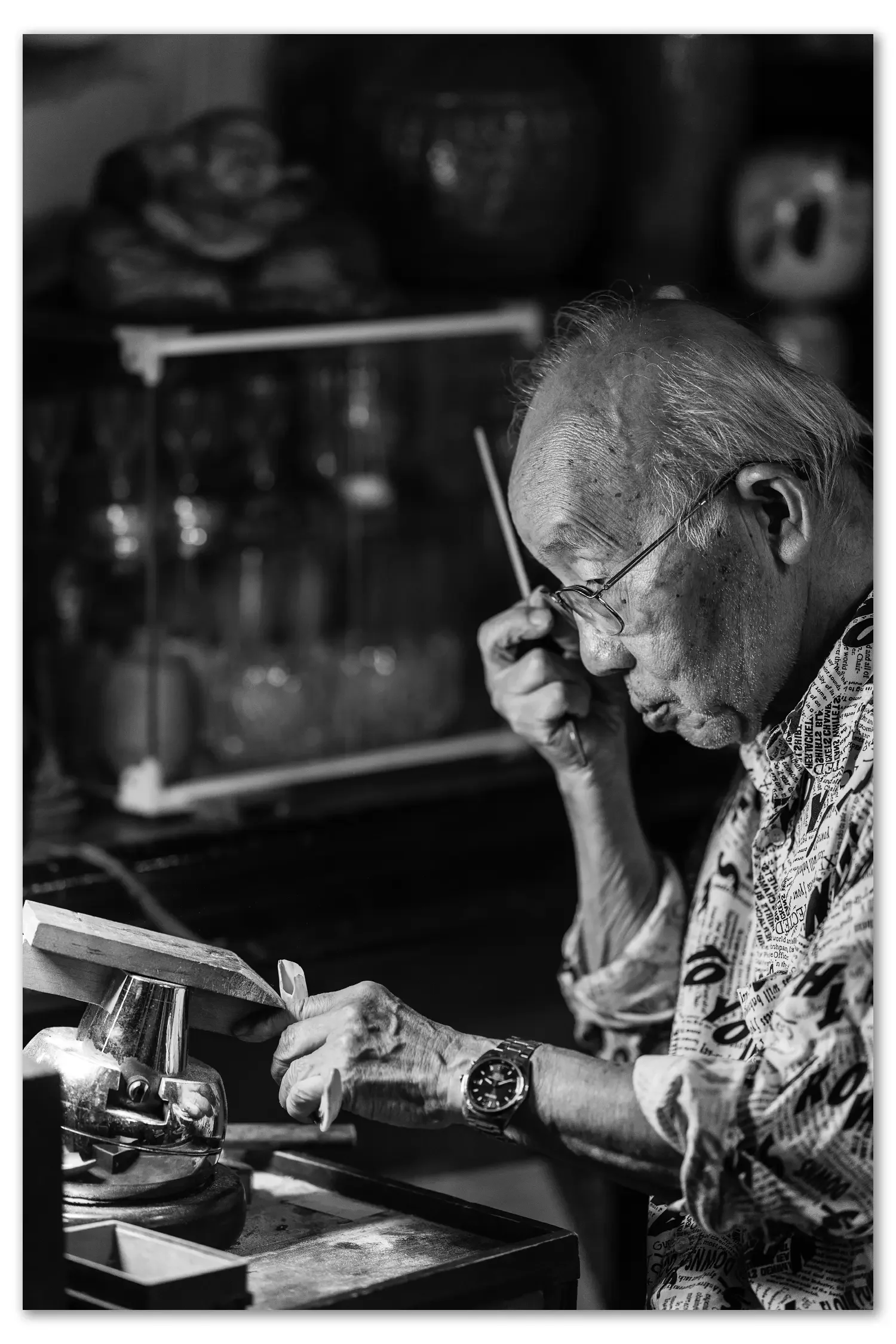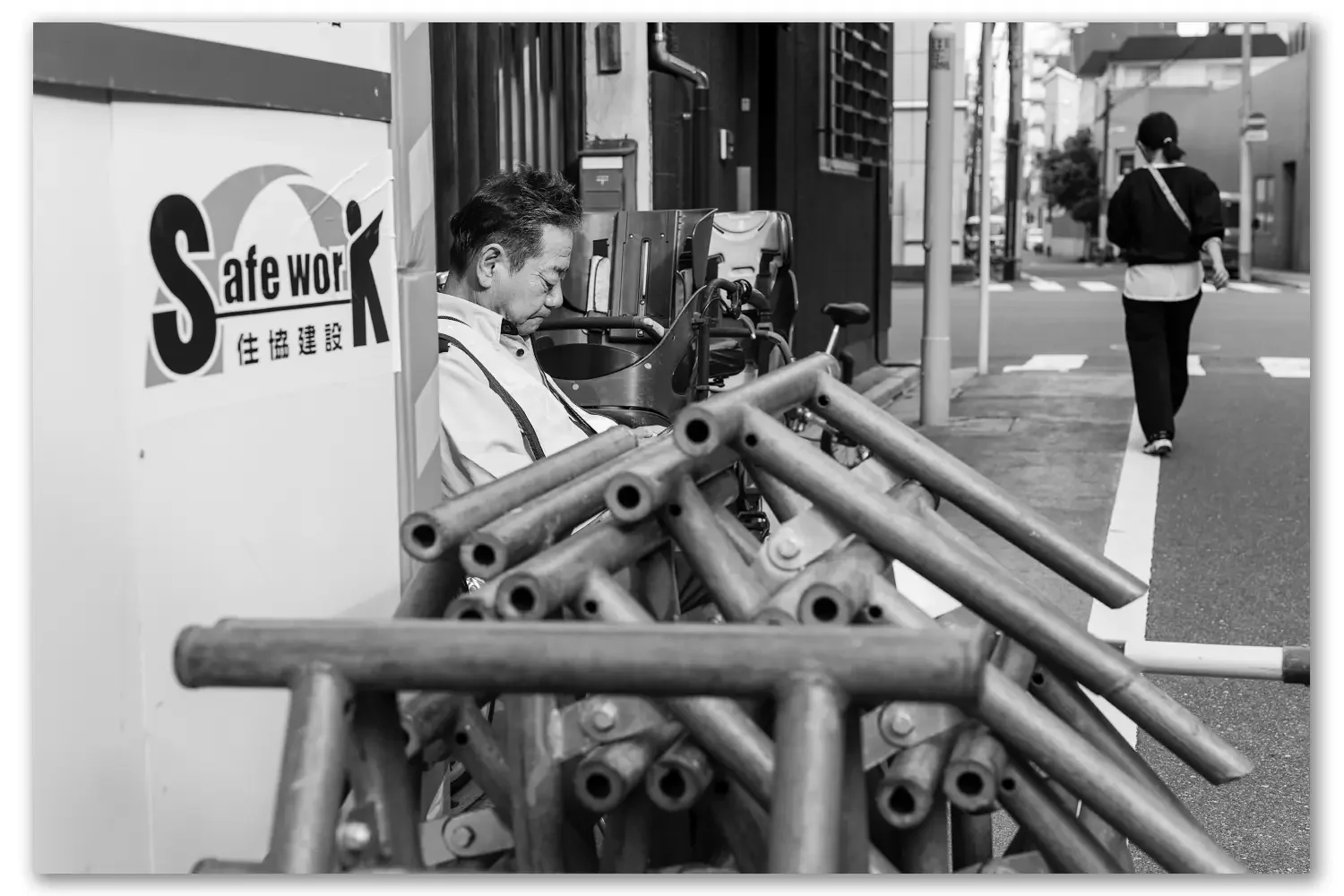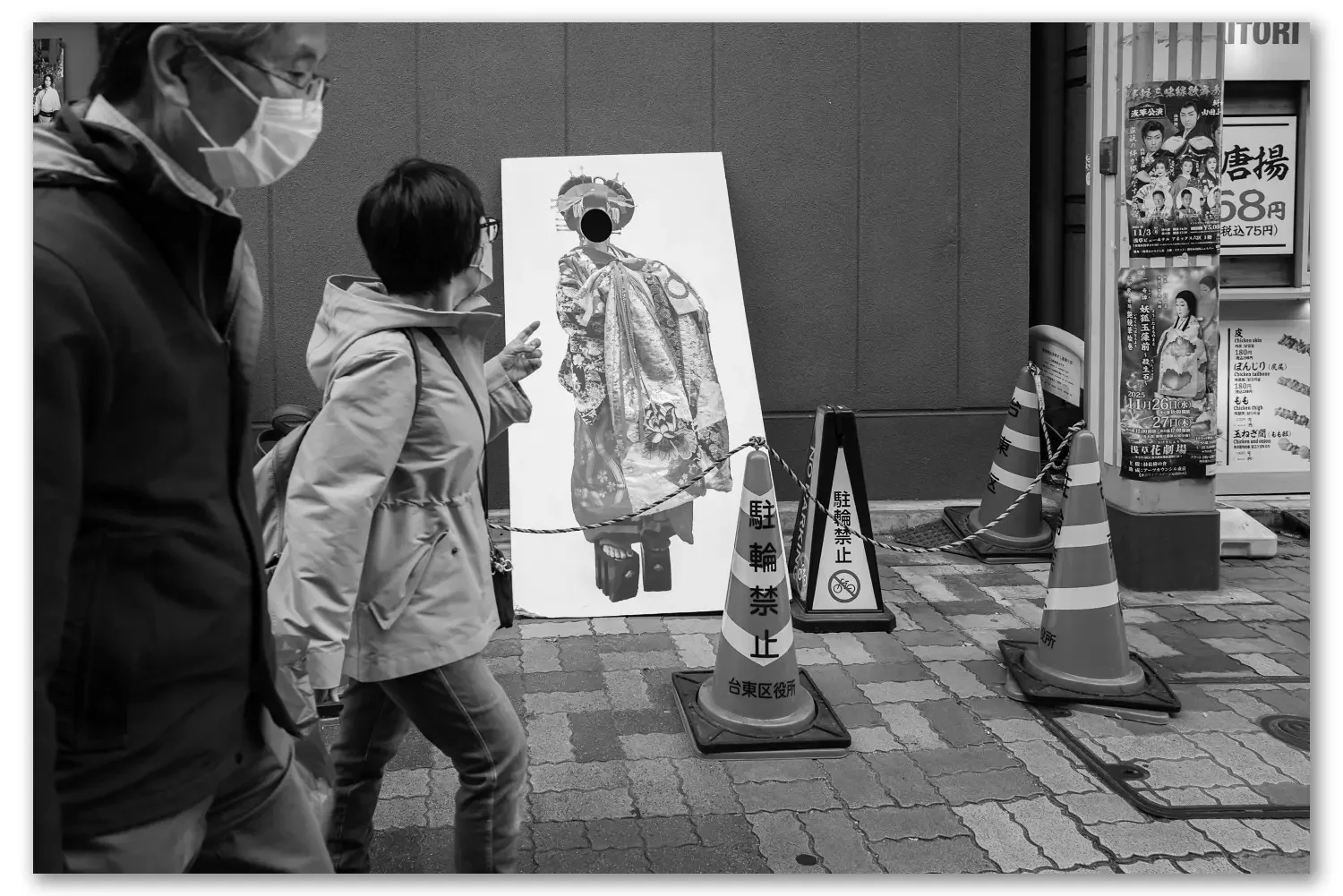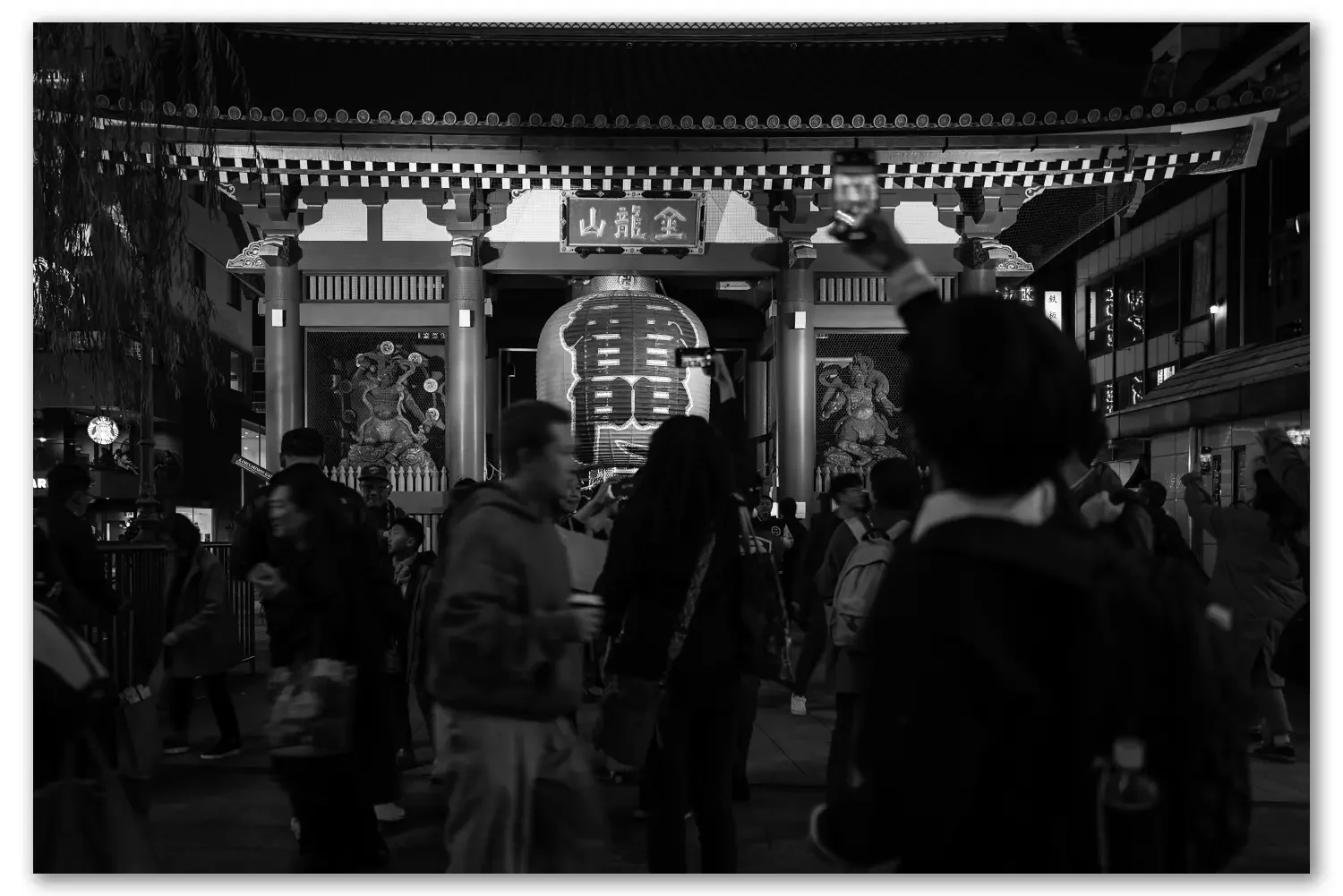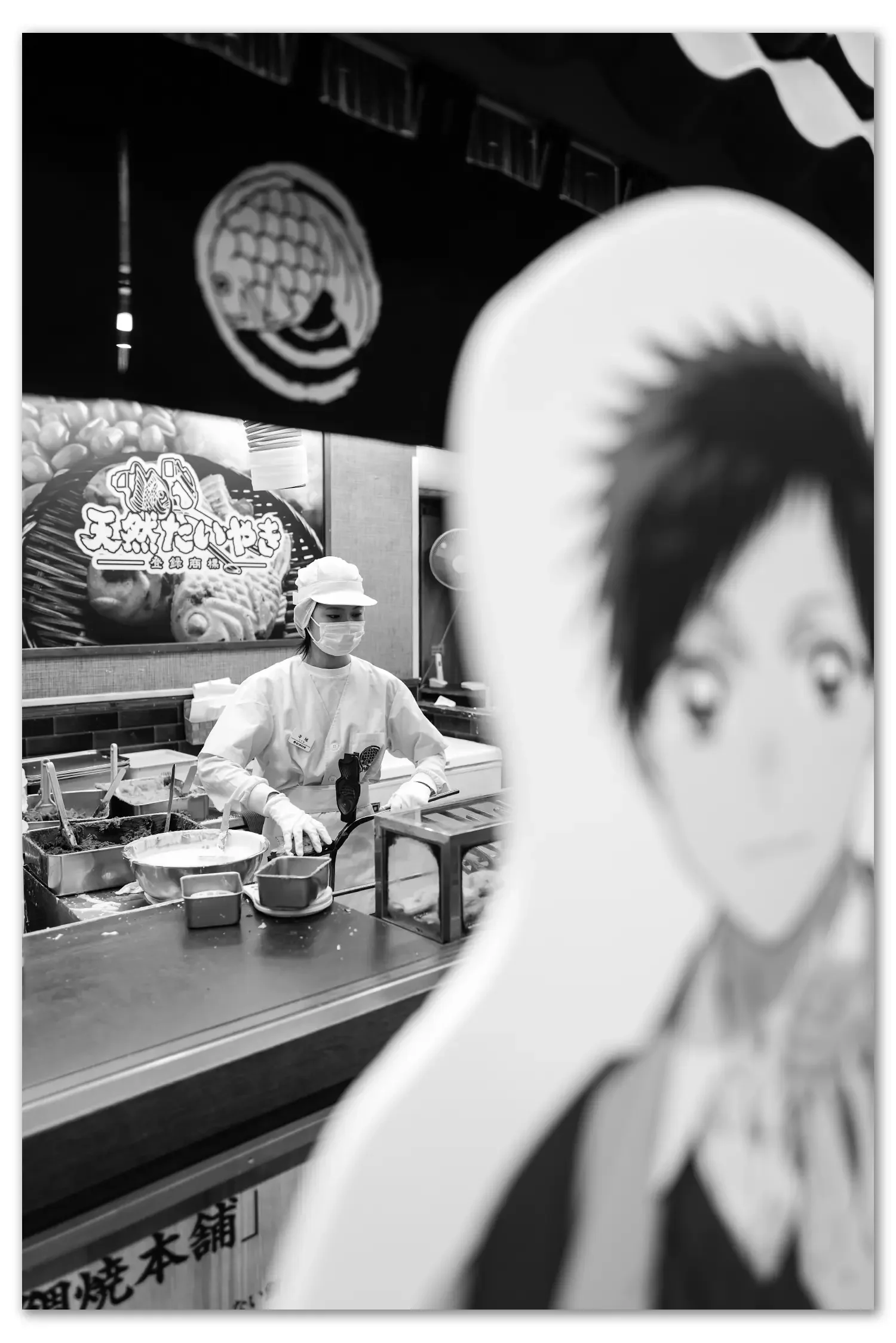A 28 mm Leica Monochrome Tokyo Photo Walk
Tokyo Photo Walk
One of the best parts of Tokyo is its size. Tokyo sprawls like few cities in the world. It sprawls up and down, with several skyscrapers and a labyrinth of underground passages that spans miles. Tokyo sprawls outward, stopping only at the borders of neighbouring prefectures, mountains and the ocean. Tokyo also has a historical sprawl, with old Tokyo to the East and newer Tokyo to the west.
Walking through this history is my favourite course of action for a day out shooting in Japan's capital city. Shooting for projects, books, and clients can be exhausting; some days, a good old-fashioned photo walk is what's needed to refresh my creative well. One of the best spots for a photo walk is through the Ueno Market, heading toward Kappabashi and finishing at Sensoji Temple.
I start at 9:30 in the morning, just before Ueno Market opens. On this day, I start at the back of the market and work my way towards the front. From here, the vendors are busy setting up; there are fewer tourists and more locals. The sun breaks over the elevated train tracks, creating pools of light below. This is a great way to get started on a day of street photography in Tokyo.
The market is given about ninety minutes of my time. Truthfully, I could spend all day there, but Kappabashi is several blocks of old Tokyo away. The roads are narrow and old, with a mix of residential and commercial buildings. Some are new and quite modern, which adds to the charm. There is no correct path to follow. When I exit the market, I turn right and follow the light.
Arriving in Kappabashi, I see the quiet streets leading up to it give way to a frenzy of shoppers, shopping their hearts out. What is unique here is that everyone is shopping for kitchenware, from chefs working at a four-star restaurant to an elderly couple looking for matching sets for their small kitchen. Kappabashi is eclectic to say the least. Again, there is no wrong way to approach Kappabshi. I follow people, crossing the street back and forth many times, until I eventually turn right and head towards the Sensoji Temple.
Sensoji has a proper way to approach, and I would recommend that you head through the main gate and along the shopping street toward the temple on your first visit. It is a spectacular sight to behold. For my purpose of street photography, I want to approach it from a different street each time. There is always something new to discover along the way.
Shooting with a fixed focal length camera, such as the Leica Q2 Monochrom, allows for focusing on filling the frame with the 28mm lens. Seeing in 28mm as they often say.
28 mm Summilux
In total, it’s about a two-hour walk, but it often takes me all day. I take one camera along, the Leica Q2 Monochrome. I love the 28mm Summilux lens. It is fast, sharp and an ideal partner for the close quarters of the narrow alleyways found along the way. This lens renders Tokyo in such a beautiful, authentic manner that I can’t imagine living without it.
The high contrast light in the market is perfect for such a lens. Wide enough to keep the scene's context without providing the distortion often associated with wide-angle lenses. The narrow streets on the way to Kappabashi are well-suited to this focal length. At the same time, the architecture of Sensoji Temple can be rendered perfectly within a single frame with the Summilux.
Leica Q2 Monochrom
The Leica Q2 Monochrome stands out for its dedication to authentic black-and-white photography, delivering stunning, high-contrast images that reveal the subtle beauty of light and shadow. Its monochrome sensor, specially designed without a colour filter array, allows every pixel to gather more light, resulting in sharper images with incredible detail and rich tonal gradations. Whether you’re capturing a busy Tokyo street or a quiet alley, the Leica Q2 Monochrome brings out the atmosphere in every shot.
One of the most impressive features is its 47.3-megapixel full-frame sensor, which pairs perfectly with the legendary 28mm Summilux lens. This combination ensures you get both clarity and character, making every frame look distinctively Leica. Plus, its fast f/1.7 lens excels in low-light situations. So early morning or nighttime walks through the city become rich photographic opportunities, with the camera faithfully rendering textures and nuances.
The camera is also a joy to use, thanks to its robust build and intuitive controls. The straightforward user interface and superb ergonomics put creativity front and center, allowing you to focus on the moment rather than navigating menus. Whether you’re out for a casual stroll or working on a personal project, the Q2 Monochrome feels like a natural extension of your eye—offering a truly immersive and enjoyable shooting experience.
Ueno to Asakusa in Pictures
The Market in Ueno offers so many possibilities for street photographers. Below are some images from my recent photo-walk.
People on the road to Kappabashi.
Scenes from Sensoji Temple, day and night.
Aside from the temples, gates and pagodas, Sensoji and the surrounding streets of Asakusa are an excellent place for street photography.
I recently wrote about that very idea on this blog.
As always, I would love to hear your story in the comments below. If you feel so inclined, share a coffee with me. I am a flat white kind of guy. Happy shooting, everyone.
To book a tour, visit my photo workshop/photo tour website, or email directly jeff@tokyoforgeries.com
